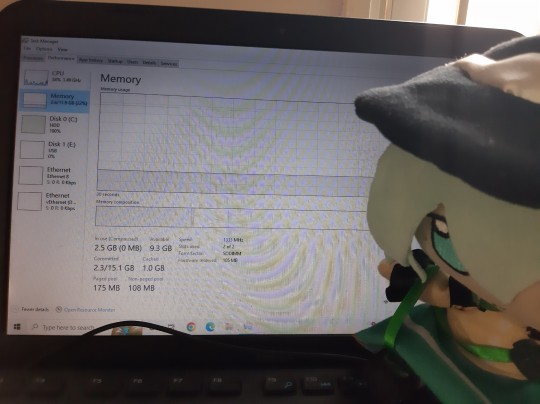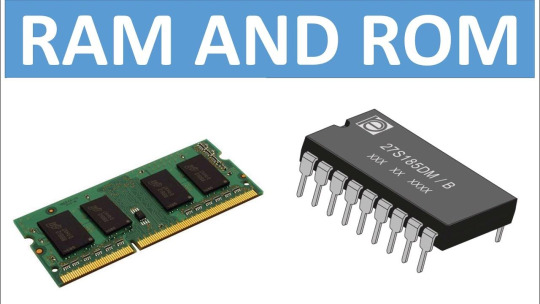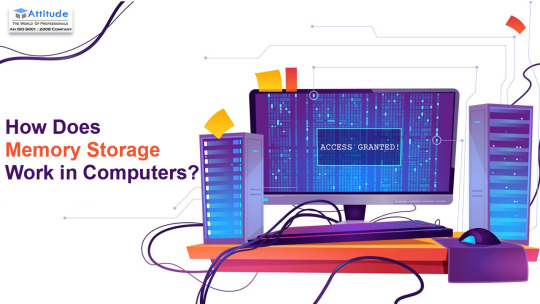#random access memory
Text


RAM
16 notes
·
View notes
Text

Another silly doodle featuring Kori. It seems there's been a misunderstanding that is rather suited to her track record!
#also i drew her in maruns first book outfit bc i havent drawn that outfit in well over a year despite really liking it#kori never gets a break from my silly doodles. dont tell her but i actually enrolled in computer systems and networking to have more#material to make jokes at her expense.#drawing#artists on tumblr#drawings#manga#anime#artist#mangaka#original character#rkgk#kori omoide#random access memory#ram#original character art#original characters#oc artist#myrios series#poisoners city#poisoned memories#poison world
10 notes
·
View notes
Text
2 notes
·
View notes
Text
RAM; Random Access Memory

Initial design sketch by Earthsong9405

Reference sheet by Earthsong9405

Reference sheet showing Memory low on ink

Reference sheet lacking ink
Race: Warforged, Envoy class
Alignment: ???
Age: ???
Gender: Often referred to with she/her, but they do not care
Height: 5′11″ (180 cm)
Weight: 282 lbs (128 KG)
Class: Artificer, Archivist subclass
Background: Sage
Tool proficiencies: Calligrapher’s Supplies, Carpenter’s Tools, Cartographer’s Tools, Forgery Kit, Thieves’ Tools, Tinker’s Tools, Woodcarver’s Tools
Integrated Tool: Cartographer’s Tools
Preferred weapon: Dagger, with Returning Weapon infusion
Languages: Common, Draconic, Elvish, Infernal
Feats: Keen Mind
Required Artificer Infusion: Replicate Magic Item, Masquerade Tattoo
It is absolutely criminal that they canned the Archivist subclass for the Artificer and opted to make the Order of Scribes wizards instead. Back when the UA for the Archivist subclass came out I got the idea for a Warforged artificer designated Random Access Memory and once the official version of the Warforged and the Order of Scribes Wizard came out it was just never going to be the same. The flavor was all wrong and it made me so very sad.
I held onto the character concept anyways though, on the off chance I ever got around to DMing a campaign (in which case the party could find a broken Warforged and choose to put time and resources into repairing them to end up with a companion) or someone let me run them using the old UAs.
Their basic concept was that they were created as an aid to a renowned archivist, tasked with helping around the archives while the archivist was out aiding others. After watching the slowly declining health of her friends, the archivist took to imparting RAM with memories of said friends in the hopes of being able to interact with them in some form once they are forced to part. The exacts would vary greatly depending on what setting they ended up being used in though.
I did get the chance to play them in a brief little adventure a few month back though, and before we began that adventure Earth offered to do a quick reference of the characters we were play, to which I said “uh, bro, you don’t want to do that, there’s a lot of metal and glass involved haha” and she said “challenge accepted.” I gave her as much information as I could and she did a wonderful job with the first iteration (the first image)! Later I got the chance to commission her to do a more in depth reference, producing the second one and its variations.
I’ve got so much more I’d love to say about the design and the character, but this post is getting long already, so I will find another time to ramble about them!
#Warforged#Dungeons and Dragons#D&D#D&D 5e#Artificer#Archivist#RAM#Random Access Memory#Memory#Reference
33 notes
·
View notes
Text
Randomly Accessed Memory: Pride Month Edition
Monday, 12 June 2023
One of the funny things about being called "gay" and a "faggot" in high school for listening to post-punk and new romantic way back in the 1980s was that these guys kept telling me Real Straight Men (TM) listened to metal, such as Judas Priest.
My brothers in Christ (I went to an all-boys Catholic high school), Rob Halford of Judas Priest is gay. A homosexual, even. There's a real good reason he was "hell-bent for leather:" He's a Leather Daddy.
2 notes
·
View notes
Text
https://www.futureelectronics.com/p/semiconductors--memory--RAM--nvram--quantum-trap-nvsram/m95m02-drmn6tp-stmicroelectronics-8011669
Static ram manufacturers, Battery backed Static RAM, SRAM memory card
M95M02 Series 2 Mb (256 K x 8) 5.5 V Serial SPI Bus EEPROM - SOIC-8
#STMicroelectronics#M95M02-DRMN6TP#RAM#NVRAM#Nonvolatile SRAM (NVSRAM)#Static ram manufacturers#Battery backed Static RAM#SRAM memory card#SRAM programming#Memory ICs#SRAM manufacturers#Random Access Memory#SRAM memory chips#SRAM chip
1 note
·
View note
Text
https://www.futureelectronics.com/p/semiconductors--memory--RAM--nvram--quantum-trap-nvsram/m95m02-drmn6tp-stmicroelectronics-3034532
Non-volatile memory, SRAM data, SRAM chip programming, Non volatile memory
M95M02 Series 2 Mb (256 K x 8) 5.5 V Serial SPI Bus EEPROM - SOIC-8
#RAM#NVRAM#Nonvolatile SRAM (NVSRAM)#M95M02-DRMN6TP#STMicroelectronics#memory#data#SRAM chip programming#card#Random Access Memory#flip-flop circuit#SRAM application#what is SRAM#SRAM application system#chips#SRAM
1 note
·
View note
Text
My phone has 4gb of ram (and runs fine for now) but my computer has 64gb ... though only because I'm an idiot.
I wanted 32gb of ram, two 16gb sticks for dual channel, but I accidentally ordered a 32gb stick but I still wanted dual channel so I just ordered another 32gb stick.
1 note
·
View note
Text
Major Difference Between RAM and ROM
The major differences between RAM (Random Access Memory) and ROM (Read-Only Memory):
Functionality:
RAM (Random Access Memory): Temporary storage that holds data currently being used by the CPU (Central Processing Unit) and programs. Think of it as your device’s short-term memory.
ROM (Read-Only Memory): Permanent storage that contains pre-programmed instructions essential for the device to…

View On WordPress
0 notes
Text
Random access memory, non volatile sram, non volatile static ram
CY62148E Series 4 Mbit (512 K x 8) 5.5 - 5.5 V 55 ns Static RAM-SOIC-32
0 notes
Text
https://www.futureelectronics.com/p/semiconductors--memory--RAM--eeprom--i2c-interface-protocol/cat24c64wi-gt3-onsemi-8463176
Random Access Memory, what is an EEPROM, programmable EEPROM manufacturers, ROM
CAT24C64 Series 64 Kb (8K X 8) 1.8 - 5.5 V I2C CMOS Serial EEPROM - SOIC-8
#RAM#EEPROM#I2C Interface Protocol#CAT24C64WI-GT3#onsemi#Random Access Memory#programmable EEPROM manufacturers#ROM#EEPROM microchip programming#EEPROM memory chip#flash EEPROM#electrically erasable programmable read only memory
1 note
·
View note
Text
Random Access Memory, types of RAM, Serial F-RAM Memory
FM24CL64 Series 64 Kb (8 K x 8) 3 V 3 us Serial F-RAM Memory - TDFN-8
1 note
·
View note
Text
How Does Memory Storage Work in Computers?

Introduction
In today's digitally dominated world, computers have evolved into indispensable tools. Whether you're an aspiring tech enthusiast taking your first steps in the realm of basic of computer or a seasoned professional, grasping the intricate mechanisms of memory storage in computers is paramount. This blog aims to demystify the world of computer memory storage, shedding light on the fundamental principles that govern this critical component of computing.
Deciphering the Fundamentals of Computer Memory Storage
Memory storage in computers serves as the backbone of the entire system. It serves as the repository for all your data, software, and the operating system itself. Whether you're drafting a document, immersing yourself in a video game, or surfing the vast expanses of the internet, your computer's memory storage is perpetually engaged, facilitating seamless access and manipulation of the data you require.
In the realm of computer memory storage, there are two principal categories: RAM (Random Access Memory) and storage devices such as hard drives and solid-state drives.
RAM (Random Access Memory):
Often regarded as a computer's working memory, RAM is akin to a digital scratchpad. When you launch an application or open a file, your computer swiftly loads it into RAM, where it's accessible for instant use. For those striving to grasp the basics of computer operations, understanding RAM's management is crucial to maintaining a computer's smooth operation.
For instance, should you find yourself running an excessive number of applications concurrently, your RAM may become overloaded, resulting in diminished performance. Familiarizing yourself with techniques to close redundant programs or considering a RAM upgrade can markedly enhance your computer's responsiveness.
Storage Devices (Hard Drives and Solid-State Drives):
Storage devices, including traditional hard drives and contemporary solid-state drives, are entrusted with the task of long-term data storage. Unlike the volatile nature of RAM, these storage solutions retain data even when your computer is powered down. Foundational knowledge of basic computer skills encompasses the ability to save and retrieve files from your computer's storage devices.
Conventional hard drives utilize spinning disks to read and write data, while solid-state drives employ flash memory, renowned for its superior speed and reliability. In the ever-evolving landscape of modern computing, comprehending the distinctions between these storage options is instrumental in making informed decisions when procuring or upgrading a computer.
The Mechanism of Data Storage
Inside a computer, data is meticulously encoded in binary form, consisting of the binary digits 0 and 1. Each binary digit, commonly referred to as a bit, represents the smallest unit of data. A group of 8 bits amalgamates to form a byte. These bytes are thoughtfully organized into files and directories. When you save a document, for instance, your computer translates the content into binary code and deposits it into the appropriate file on your chosen storage device.
Upon opening the document, your computer adeptly retrieves the binary code from storage, temporarily placing it into RAM for expedited access. There, it is transmuted back into its original format, ready for you to view and modify. This entire process unfolds at an astonishing pace, owing to the sophisticated synergy between hardware and software within the system.
Conclusion
Mastery of basic computer skills is indispensable for navigating the intricacies of the digital world. An intrinsic facet of these skills is understanding the inner workings of computer memory storage. Be it the dynamic realm of RAM or the enduring stability of storage devices, memory storage profoundly influences the performance and functionality of your computer.
Thus, whether you're a neophyte in the digital realm or a seasoned user, equipping yourself with a firm understanding of these foundational concepts empowers you to make informed decisions regarding your computer's hardware, optimize its performance, and proficiently manage your digital assets. Delving into the intricacies of computer memory storage is a substantial stride toward becoming a more adept and tech-savvy computer user.
0 notes
Text
Random Access Memory, dram chip manufacturers, high speed interfaces
AS4C4M16S 256-Mbit (16 M x 16) 3.6 V High-Speed CMOS Synchronous DRAM - TFBGA-54
0 notes
Text
tumblr users will have the most inaccessible, unreadable, low contrast, flashing carrd you can possibly imagine, with a dni full of insider acronyms with no translation and numerous link buttons labelled with cryptic captions, and then go ahead and put “ableists dni and kys!” on that carrd
#yeah i’m bitter about carrds becoming so hostile to disabled people#nobody with vision issues or photosensitivity or processing issues or epilepsy or memory issues could possibly read your carrd#small changes like proper colour contrast between background and text can make a world of difference in making your page accessible#even just spelling out the acronyms in your dni or mentioning WHERE a mysterious link will actually lead is so helpful#i see so many links that are just random literary quotes that turn out to lead to a mandatory dni. how would anyone know that??#txt#accessibility#1000
7K notes
·
View notes
Text
What is Non Volatile FRAM, Random access memory, Fram semiconductor
FM25CL64B Series 64 Kb (8 K x 8) 3.3 V SMT Serial F-RAM Memory - SOIC-8
0 notes